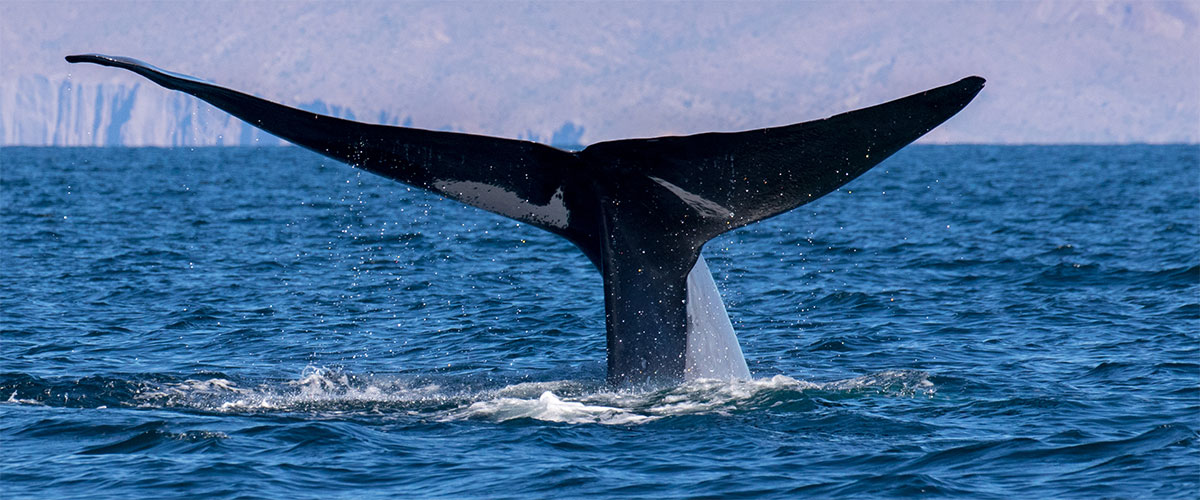Why Blue Whales?
Development
By studying the blue whale we can investigate the developmental clock and relationships to body size. Large animals tend to take longer to develop than smaller ones—why? Unlocking developmental timing could improve efficiencies in stem cell therapies, which require cells to be at specific stages of maturity to be relevant.
Cancer + Longevity
The blue whale has several orders of magnitude more cells than humans, and that many more chances for regulation to go wrong. Even so, whales generally don’t get cancer at a higher rate than humans. The blue whale likely has mechanisms that could impact our understanding of cancer prevention and treatment.
Conservation
Blue whales are an endangered species and understanding its genome could help scientists protect and rebuild its populations. For example, studies of genetic diversity can help assess and direct conservation efforts, and the blue whale genome can serve as a resource for other whale scientists.
About this Project
- What is the current progress?
The Thomson Lab has acquired live samples of blue whale fibroblasts, the connective tissue cells that reside under the skin. They have cultured these cells and submitted them to a variety of genome sequencing methods.
The Stewart Lab has taken the raw reads from sequencing and assembled them into a connected, mostly contiguous, blue whale genome. The Stewart Lab, with help from collaborators, is in the process of annotating the blue whale genome (identifying all the genes along the genome and giving them meaningful names).
- What motivates this project?
We are interested in comparing the blue whale to the Etruscan shrew—the world’s largest mammal to the smallest—to better understand what drives developmental timing and body size. Further research will also compare the blue whale to similar species of whales and dolphins.
- Why is understanding the blue whale genome important?
Blue whales are an endangered species and its genome would be a useful resource for protecting and rebuilding its populations. For example, studies of genetic diversity can help assess and direct conservation efforts, while genetic markers can be used to detect illegal fishing by analyzing meat.
Publication of the blue whale genome will also serve as a community resource for other scientists who study whales. Although genomes of several other whale species have been published, they were sequenced using an earlier generation of sequencing technologies.
Knowing the blue whale genome will facilitate design of various molecular tools to manipulate its cells, as well as interpretation of various assays.
- Who helped collaborate on this project?
- How can I collaborate on this project?
The Thomson Lab and Stewart Lab welcome new collaborators and other members for the project.
Contact Yury Bukhman for more information.
Download the Data
Raw Data
Unprocessed data that has been created and output by a DNA/RNA sequencing instrument.
This information is hosted at the Vertebrate Genomes Project.
Genome Sequences & Annotations
This is curated data in which the process of identifying the locations of genes and all of the coding regions in a genome helps make sense of the data to determine what those genes do.
- Identifying portions of the genome that do not code for proteins
- Identifying elements on the genome, a process called gene prediction
- Attaching biological information to these elements


